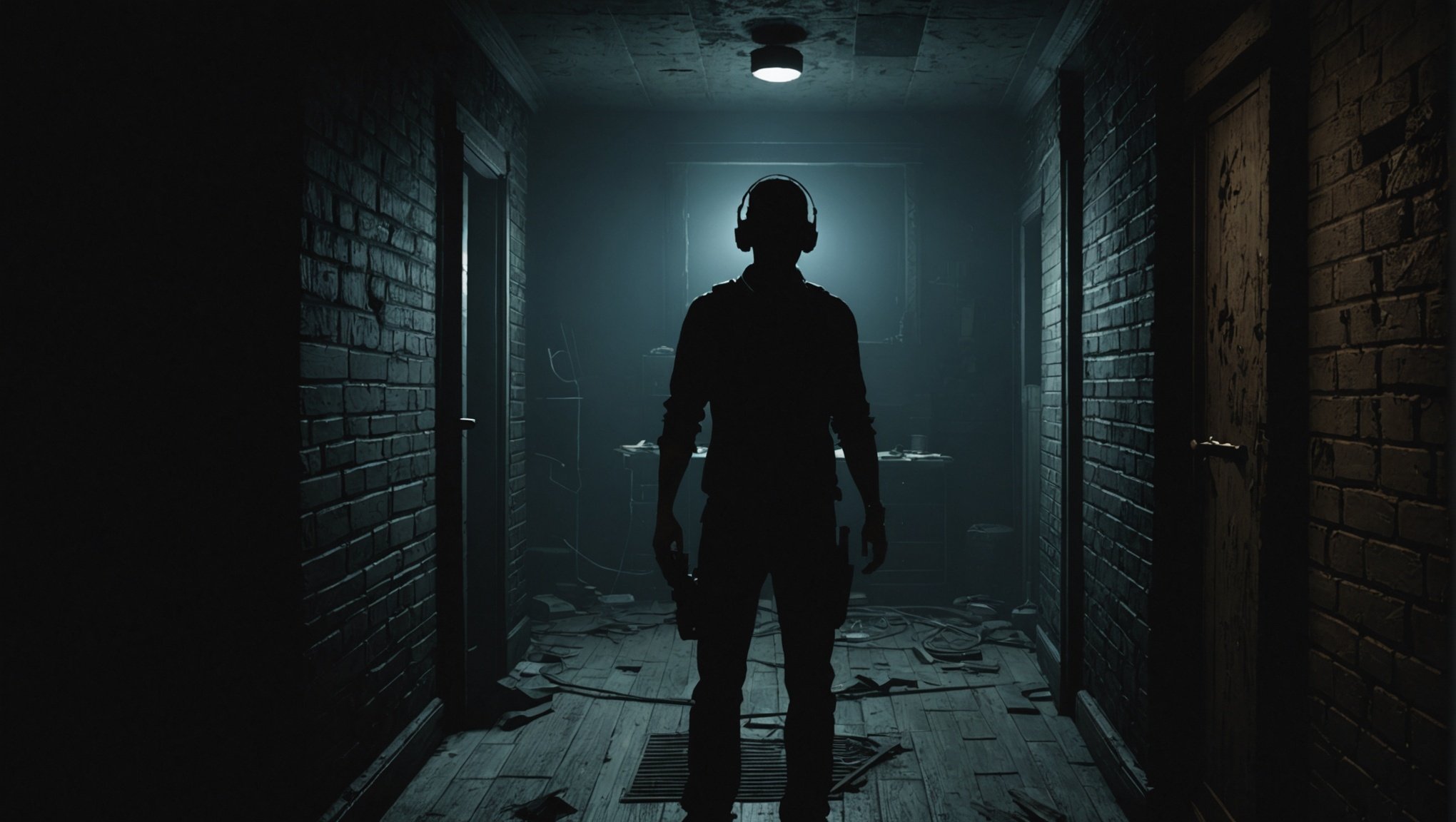Unlocking Fear: Leveraging Adaptive Audio to Amplify Player Immersion in Horror Games
The Power of Sound in Horror Games
When it comes to horror games, the audio design is often the unsung hero that elevates the gaming experience from merely scary to downright terrifying. Sound has the unique ability to manipulate our emotions and perceptions, making it a crucial element in creating immersive and memorable experiences. In this article, we will delve into how adaptive audio is used in horror games to amplify player immersion and explore some of the best examples in the genre.
The Psychology of Sound Fear
Sound effects and music in horror games are not just about jump scares; they are about creating a pervasive atmosphere of dread and tension. Games like Alien Isolation and Amnesia: The Dark Descent use sound to make players feel vulnerable and defenseless. For instance, in Alien Isolation, the sound of the Xenomorph’s movements and breathing creates a constant sense of unease, making players feel like they are being stalked even when the creature is not on screen.
Also to see : Unlocking Infinite Worlds: A Developer”s Guide to Procedural Generation in Survival Game Landscapes
"Sound is a powerful tool for creating fear because it taps into our primal instincts. The unknown sounds, the creaks, and the groans all contribute to an atmosphere that keeps players on edge," - Creative Director of *Alien Isolation*, Al Hope.
Adaptive Audio: The New Frontier in Game Design
Adaptive audio refers to the dynamic adjustment of sound effects, music, and other audio elements in real time based on the player’s actions and the game’s environment. This technology has revolutionized the way horror games are designed, allowing for a more personalized and immersive gaming experience.
Real-Time Sound Design
In games like Phasmophobia, the sound design is highly adaptive. As players explore haunted locations, the audio changes to reflect the environment and the presence of ghosts. For example, the sound of footsteps, creaking doors, and eerie whispers all adjust in real time to create a more realistic and frightening experience.
In parallel : Unlocking Fun: Enhancing Survival Games with Real-World Physics for Captivating Crafting Systems
| Game | Adaptive Audio Features |
|
|-----------------------------------------------------------------------------------------|
| Phasmophobia | Dynamic sound effects based on player movement and ghost presence |
| Alien Isolation | Real-time sound adjustments for Xenomorph movements and player actions |
| The Anomaly Project| Sound cues for anomalies and environment changes |
| A Quiet Place: The Road Ahead | Immersive audio for stealth mechanics and environmental interactions |
Creating Immersive Experiences Through Virtual Reality
Virtual reality (VR) has opened up new avenues for horror game developers to create truly immersive experiences. Games designed for VR leverage adaptive audio to make the virtual world feel incredibly real.
Case Study: Phasmophobia in VR
Phasmophobia, when played in VR, becomes an even more terrifying experience. The game’s use of 3D audio ensures that players can pinpoint the source of sounds in the virtual environment, making the ghost-hunting experience feel incredibly realistic. This level of immersion is what sets VR horror games apart from their non-VR counterparts.
"Playing Phasmophobia in VR is a whole different ball game. The 3D audio makes you feel like you're really there, and the fear becomes almost palpable," - Kinetic Games Developer.
Interactive Sound Effects and Game Narrative
Interactive sound effects play a crucial role in enhancing the game narrative and level design. These effects are not just passive; they are often tied to the player’s actions, making the game world feel more interactive and alive.
Example: Layers of Fear
In Layers of Fear, the sound design is intricately linked with the game’s narrative. As players explore the painter’s mansion, the sound effects and music change to reflect the painter’s descent into madness. The subtle uses of environmental changes and sound cues help players uncover the dark past of the painter, creating a deeply immersive and haunting experience.
Level Design and Adaptive Audio
Level design in horror games is often tailored to maximize the impact of adaptive audio. Levels are designed to create specific soundscapes that enhance the fear factor.
The Anomaly Project: Spotting the Differences
In The Anomaly Project, the level design is focused on creating an atmosphere of observation and tension. Players must spot anomalies in the environment, and the sound cues are crucial for this. The game’s use of adaptive audio ensures that players are alerted to changes in the environment, making the experience both challenging and frightening.
Practical Insights and Actionable Advice for Game Developers
For game developers looking to leverage adaptive audio in their horror games, here are some practical insights and actionable advice:
- Use 3D Audio: Implementing 3D audio can significantly enhance the immersive experience, especially in VR games.
- Dynamic Sound Effects: Ensure that sound effects are dynamic and adjust in real time based on the player’s actions and the environment.
- Sound Cues: Use sound cues to guide players through the game world and to alert them to potential dangers.
- Music and Atmosphere: Music and ambient sounds should be used to create a pervasive atmosphere of dread and tension.
- **Conduct User Testing**: Test your game with real players to see how they react to different sound cues and adaptive audio features.
- **Collaborate with Sound Designers**: Work closely with sound designers to ensure that the audio aligns with the game's narrative and level design.
- **Use Real-World Inspirations**: Draw inspiration from real-world sounds and environments to create a more authentic and frightening experience.
- **Keep it Simple but Effective**: Sometimes, less is more. Simple, well-placed sound effects can be more terrifying than a cacophony of sounds.
The Future of Horror Games: Augmented Reality and Beyond
As technology advances, we are seeing new frontiers in horror game development, including the use of augmented reality (AR). AR has the potential to blur the lines between the real world and the virtual world, creating even more immersive and terrifying experiences.
A Quiet Place: The Road Ahead
A Quiet Place: The Road Ahead is an example of how stealth mechanics and adaptive audio can be used to create a highly immersive experience. The game’s focus on quiet movements and the use of sound to navigate a post-apocalyptic world sets a new standard for horror games. As AR technology improves, we can expect to see more games that integrate real-world environments into the horror experience.
Adaptive audio is a powerful tool in the arsenal of horror game developers, allowing them to create immersive and memorable experiences that leave players on the edge of their seats. By leveraging real-time sound design, interactive sound effects, and innovative technologies like VR and AR, developers can push the boundaries of what is possible in horror gaming.
Whether you’re a seasoned gamer or a developer looking to create the next big horror hit, understanding the role of adaptive audio is crucial. It’s not just about the visuals; it’s about creating a world that feels alive and terrifying, and that’s where the true magic of horror games lies.
In the words of a seasoned gamer:
"The best horror games are those that make you feel like you're part of the world. Adaptive audio is what makes that happen. It's what turns a good game into a great one," - Reddit User, Wonder-Lad.











